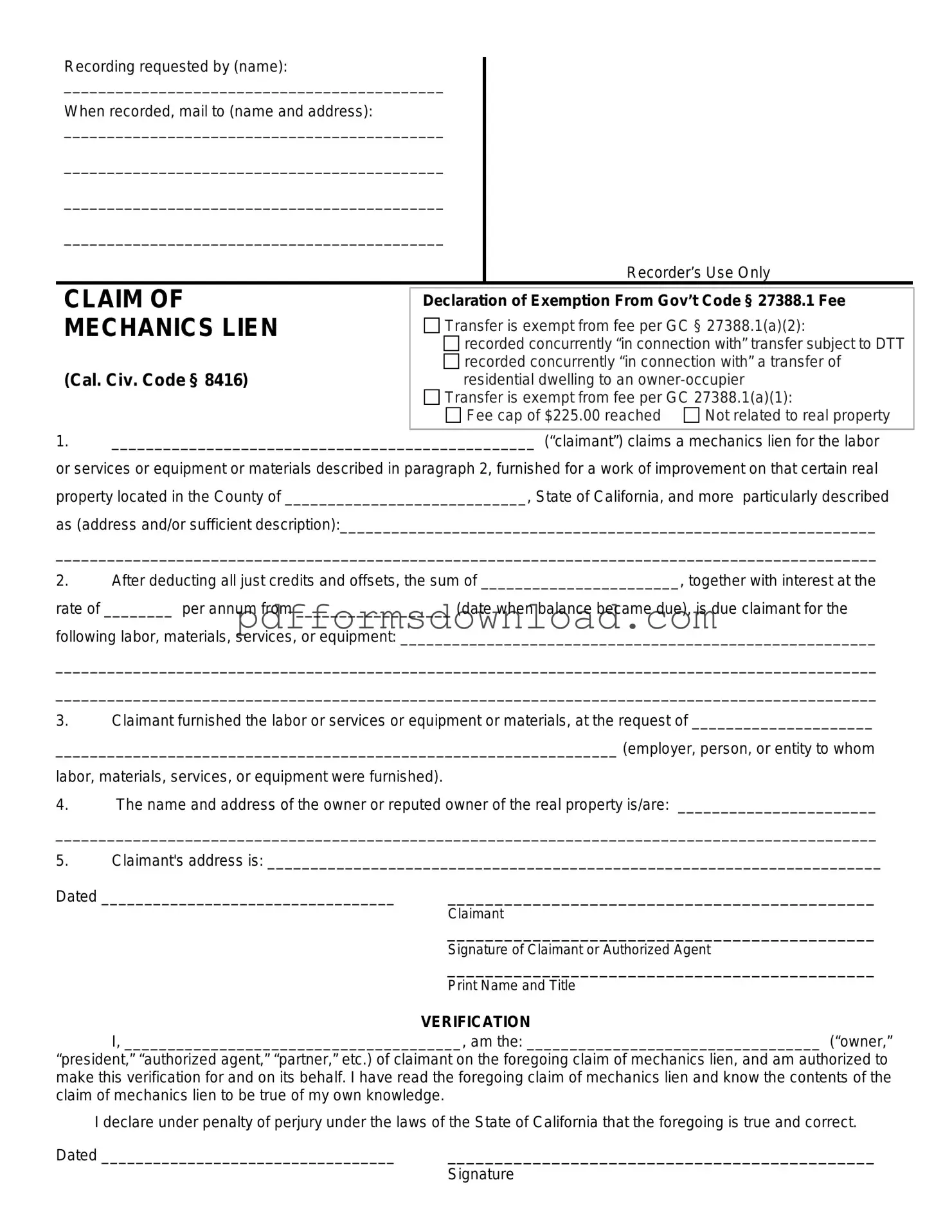What is a Mechanics Lien in California?
A Mechanics Lien is a legal claim against a property that ensures payment for labor, materials, or services provided during the construction or improvement of that property. It protects contractors, subcontractors, and suppliers by allowing them to seek compensation directly from the property itself if they are not paid for their work. This lien can be enforced through the court system if necessary.
Who can file a Mechanics Lien in California?
In California, various parties can file a Mechanics Lien. This includes general contractors, subcontractors, suppliers, and laborers who have contributed to the construction or improvement of a property. Essentially, anyone who has provided work or materials and has not been paid can potentially file a lien to secure their right to payment.
What are the requirements to file a Mechanics Lien?
To file a Mechanics Lien in California, certain conditions must be met. First, the claimant must have provided labor or materials to the property. Additionally, the lien must be filed within a specific timeframe, typically 90 days after the completion of the work. The lien must also include accurate details about the work performed, the amount owed, and a description of the property. Proper notice must be given to the property owner as well.
How do I file a Mechanics Lien in California?
Filing a Mechanics Lien involves several steps. First, complete the required Mechanics Lien form, ensuring that all necessary information is included. Next, file the form with the county recorder's office in the county where the property is located. A filing fee will typically apply. After filing, it is crucial to serve a copy of the lien to the property owner and any other relevant parties, adhering to the legal requirements for notice.
What happens after a Mechanics Lien is filed?
Once a Mechanics Lien is filed, it becomes a public record and attaches to the property. This can complicate the sale or refinancing of the property until the lien is resolved. The property owner may choose to pay the outstanding amount to have the lien removed, or the claimant may initiate legal proceedings to enforce the lien if payment is not received. The lien remains in effect for a specific period, usually up to 90 days, unless legal action is taken.
Can a Mechanics Lien be removed?
Yes, a Mechanics Lien can be removed in several ways. The most straightforward method is for the property owner to pay the amount owed, after which the lien can be formally released. Additionally, if the claimant does not take legal action to enforce the lien within the required timeframe, the lien may expire. A property owner can also challenge the validity of the lien in court, which may lead to its removal if found invalid.
What are the consequences of not filing a Mechanics Lien?
If a contractor or supplier does not file a Mechanics Lien when owed payment, they may lose the right to collect that debt through the property. Without the lien, they would have to pursue other legal avenues, which may be more complex and less effective. Filing a Mechanics Lien provides a stronger position for recovery, as it secures a claim against the property itself.
Is there a time limit for filing a Mechanics Lien?
Yes, there is a strict time limit for filing a Mechanics Lien in California. Generally, the lien must be filed within 90 days of the completion of the work or delivery of materials. It is essential to be aware of this deadline to ensure that the right to file is not lost. In some cases, if a Notice of Completion is recorded, the time limit may be reduced to 60 days.
